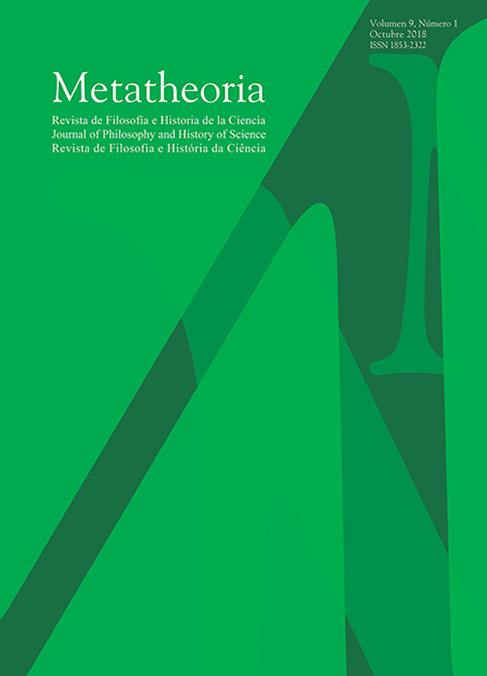Adriaan van Roomen and the Uranography: The Link between Mathematical Disciplines and Philosophy in the 16th and 17th Centuries
DOI:
https://doi.org/10.48160/18532330me9.205Keywords:
astronomy, mathematics, philosophy, quaestio de certitudine mathematicarumAbstract
Astronomical works published in the sixteenth century can certainly be categorized according to two characteristics: some works dealing with the philosophical questions related to celestial bodies and others dealing with technical/mathematical problems of astronomy. In the following century, although astronomical publications continued to approach subject matter in the aforementioned ways, it seems to have emerged a type of work that tried to unite the philosophical and mathematical aspects of astronomy. In this paper, we will approach the Ouranographia of Adriaan van Roomen (1561-1615), one of the first works to ground astronomy on a merger of philosophical knowledge and the technical aspects of mathematics — indirectly entering discussions about the ‘quaestio de certitudine mathematicarum’. Thus, van Roomen not only published a groundbreaking work, but also — in the midst of an intense debate about the classification of knowledge and mathematics — created a “new” discipline, uranography.
References
Achillini, A. (1545), Opera omnia in unum collecta, Venezia: Hieronymum Scotum.
Amici, J.B. (1540), De motibus corporum coelestium juxta principia peripapetica, Paris: Jacob Kerver.
Apianus, P. (1524), Cosmographicus liber, Landshut: Joannis Weyssenburgers.
Apianus, P. (1540), Astronomicum caesareum, Ingolstadt: Georg y Petrus Apianus.
Aristóteles (1996), Acerca del cielo, Madrid: Gredos.
Barozzi, F. (1598), Cosmographia in quatuor libros distributa, Venezia: Gracioso Perchacino.
Bayer, J. (1603), Uranometria, Augsburg: Mangus Christophorus.
Beati, G. (1662), Sphaera triplex artificialis, elementaris, ac caelestis, Roma: Typis Varesij.
Benedetto, G. (1591), De coelo et elementis liber, Ferrara: Victorius Baldinus.
Biagioli, M. (1989), “The Social Status of Italian Mathematicians, 1450-1600”, History of Science27: 41-95.
Bockstaele, P. (1976), “The Correspondence of Adriaan van Roomen”, LIAS –Sources and Documents relating to the Early Modern History of Ideas3: 85-129, 249-299.
Bockstaele, P. (1992), “The Correspondence of Adriaan van Roomen (1561-1615): Corrections and Additions, 1594-1615”, LIAS–Sources and Documents relating to the Early Mordern History of Ideas19: 3-20.
Bockstaele, P. (2009), “Between Viète and Descartes: Adriaan van Roomen and the Mathesis Universalis”, Archive for History of Exact Sciences63(4): 433-470.
Borri, C.(1631), Collecta astronômica, Lisboa: Mathias Rodrigues.
Busard, H.L.L. (1981), “Roomen, Adriaan van”, en Gillispie, C.C. (ed.). Dictionary of Scientific Biography, vol. 11, New York: Scribner, pp. 532-534.
Capel, H. (1989), “Historia de la Ciencia e Historia de las Disciplinas Científicas”, GeoCrítica: Cuadernos Críticos de Geografía Humana XII(84). http://www.ub.edu/geocrit/geo84c.htm Web (acceso:15 de mayo de 2017).
Carolino, L.M. (2006), “João Delgado SJ e a ‘Quaestio de Certitudine Mathematicarum’em Inícios do Século XVII”, Revista Brasileira de História da Matemática6(11): 17-49.
Carolino, L.M. (2009), “Cristoforo Borri e o Impacto da Nova Astronomia em Portugal no Século XVII”, Revista Brasileira de História da Ciência2(2): 160-181.
Clavius, C. (1570), In sphaeram Ioannis de Sacro Bosco commentaries, Roma: Victorium Helianum.
Copérnico, N. (1543), De revolutionibus orbium coelestium, Norimbergae: J. Petreium.
Crapulli, G. (1969), Mathesis Universalis: genesi di una' idea nel XVI secolo, Roma: Edizioni dell' Ateneo.
Descartes, R. (1684), Regulae ad directionem ingenii, Amsterdam: Jan Rieuwertsz.
Euclides (2009), Os elementos, São Paulo: UNESP.
Filateo, L. (1563), In IIII. libros Aristotelis de caelo, et mundo, commentarii, Venezia: V. Valgrisium.
Gonçalves, C.H.B. y Z.V. Oliveira (2010), “A Atividade Matemática de Adriaan van Roomen”, Revista Brasileira de História da Matemática10(20): 151-168.
Hallyn, F. (2008). “A Poem on the Copernican System: Cornelius Gemma and His Cosmocritical Art”, en Hirai, H. (ed.), Cornelius Gemma: Cosmology, Medicine and Natural Philosophy in Renaissance Louvain, Pisa: Fabrizio Serra, pp. 13-32.
Janduco, J. de (1552), In libros Aristotelis de coelo et mundo, Venezia: apud Juntas.
Knobloch, E. (1989), “Klassifikationen”, en Folkerts, M. (ed.), Mass, Zahl und Gewicht –Mathematik als Schlüssel zu Weltverständnis und Weltbeherrschung, Weinheim: VCH, Acta Humaniora, pp. 13-40.
Leitão, H. (2002), “Uma Nota sobre Pedro Nunes y Copérnico”, Gazeta de Matemática143: 60-78.
Leitão, H. (2004), “O Livro Científico Antigo, Séculos XV e XVI: notas sobre a situação portuguesa”,en Leitão, H. (ed.), O Livro Científico Antigo dos séculos XV e XVI. Ciências físico-matemáticas na Biblioteca Nacional. Catálogo de livros científicos dos séculos XV e XVI, Lisboa: Ministério da Cultura e Biblioteca Nacional de Portugal, pp. 15-53.
Mancosu, P. (1996), Philosophy of Mathematics and Mathematical Practice in Seventeenth Century, NewYork: Oxford University Press.
Navarro Brotóns, V. (2000), “Astronomía y cosmografía entre 1561 y 1625: aspectos de la actividad de los matemáticos y cosmógrafos españoles y portugueses”, Cronos: Cuadernos valencianos de historia de la medicina y de la ciencia3(2): 349-380.
Oliveira, Z.V. (2015), A Classificação das Disciplinas Matemáticas e a Mathesis Universalis nos Séculos XVI e XVII: um estudo do pensamento de Adriaan van Roomen, Tesis Doctoral, Universidade Estadual Paulista “Júlio de Mesquita Filho”.
Sasaki, C. (2004), Descartes's Mathematica Thought, New York: Springer.
Sacrobosco, J.(1472), Tractatvm de Spera, Venezia: Florentius de Argentina.
van Roomen, A.(1591), Ouranographia sive caeli description, Antwerpen: Johannes van Keerbergen.
van Roomen, A. (1593), Ideae mathematicae pars prima, Antwerpen: Johannes van Keerbergen.
van Roomen, A. (1597), In Archimedis circuli dimensionem expositio et analysis, Würzburg: Georg Fleischmann.
van Roomen, A. (1598), Theses astronomicae quibus proponuntur nonnulla de corporum mundanorum simplicium disctinctione et numero,Würzburg: Georgius Fleischmann.
van Roomen, A. (1602), Universae mathesis idea, Würzburg: Georgius Fleischmann.
van Roomen, A. (1605), Mathesis polemica, Frankfurt: Levinus Hulsius.
van Roomen, A. (1606), Speculum astronomicum siue organum forma mappae expressum, Leuven: Johannes Masi.
Weber, J.P. (1964), “Sur la Composition de la Regula IV de Descartes”, Revue Philosophique de la France et de l' Étranger89(154): 1-20.
Westman, R.S (1980), “The Astronomer’s Role in the Sixteenth Century: A Preliminary Study”, History of Science18: 105-147.
Downloads
Published
How to Cite
Issue
Section
License
Copyright (c) 2020 Metatheoria – Journal of Philosophy and History of ScienceThe documents published here are governed by the licensing criteria
Creative Commons Argentina.Atribución - No Comercial - Sin Obra Derivada 2.5 https://creativecommons.org/licenses/by-nc-nd/2.5/ar/





